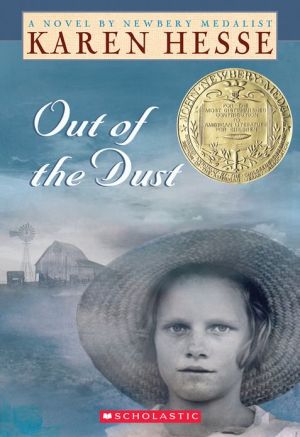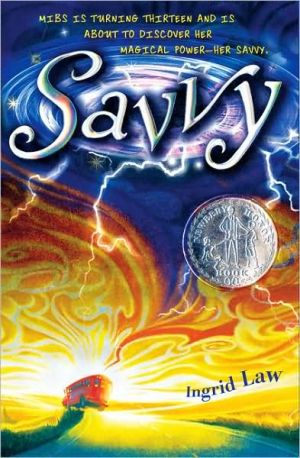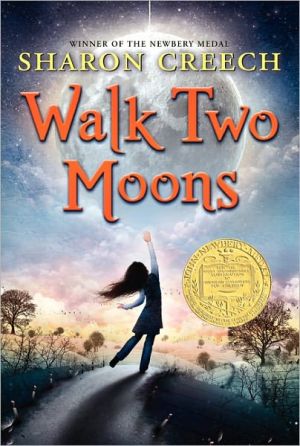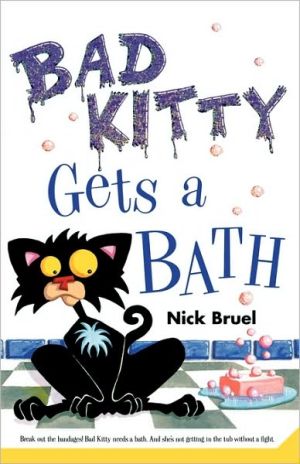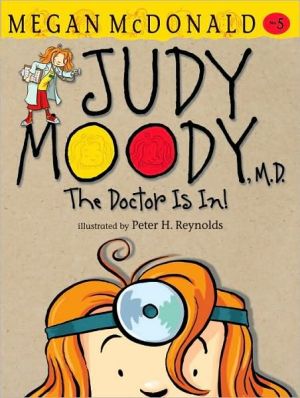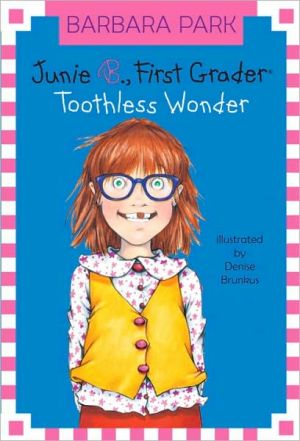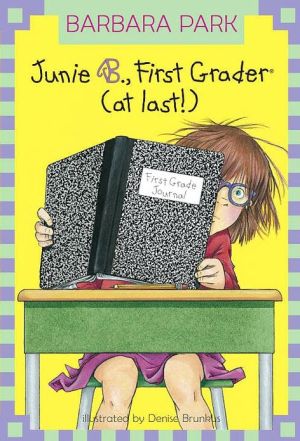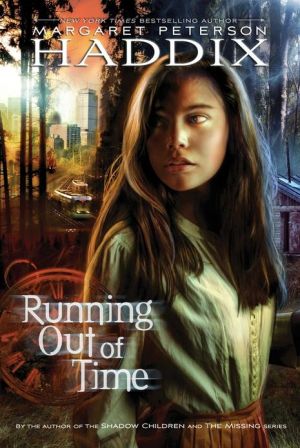Out of the Dust
When Billie Jo is just fourteen she must endure heart-wrenching ordeals that no child should have to face. The quiet strength she displays while dealing with unspeakable loss is as surprising as it is inspiring.\ Written in free verse, this award-winning story is set in the heart of the Great Depression. It chronicles Oklahoma's staggering dust storms, and the environmental--and emotional--turmoil they leave in their path. An unforgettable tribute to hope and inner strength.
Search in google:
When Billie Jo is just fourteen she must endure heart-wrenching ordeals that no child should have to face. The quiet strength she displays while dealing with unspeakable loss is as surprising as it is inspiring.Written in free verse, this award-winning story is set in the heart of the Great Depression. It chronicles Oklahoma's staggering dust storms, and the environmental—and emotional—turmoil they leave in their path. An unforgettable tribute to hope and inner strength.Publishers WeeklyIn a starred review of the 1998 Newbery Medal winner, set during the Depression, PW said, "This intimate novel, written in stanza form, poetically conveys the heat, dust and wind of Oklahoma. With each meticulously arranged entry Hesse paints a vivid picture of her heroine's emotions." Ages 11-13. (Jan.)
\ Publishers Weekly\ - Publisher's Weekly\ This intimate novel, written in stanza form, poetically conveys the heat, dust and wind of Oklahoma along with the discontent of narrator Billy Jo, a talented pianist growing up during the Depression. Unlike her father, who refuses to abandon his failing farm "He and the land have a hold on each other", Billy Jo is eager to "walk my way West/ and make myself to home in that distant place/ of green vines and promise." She wants to become a professional musician and travel across the country. But those dreams end with a tragic fire that takes her mother's life and reduces her own hands to useless, "swollen lumps." Hesse's The Music of Dolphins spare prose adroitly traces Billy Jo's journey in and out of darkness. Hesse organizes the book like entries in a diary, chronologically by season. With each meticulously arranged entry she paints a vivid picture of Billy Jo's emotions, ranging from desolation "I look at Joe and know our future is drying up/ and blowing away with the dust" to longing "I have a hunger,/ for more than food./ I have a hunger/ bigger than Joyce City" to hope the farmers, surveying their fields,/ nod their heads as/ the frail stalks revive,/ everyone, everything, grateful for this moment,/ free of the/ weight of dust". Readers may find their own feelings swaying in beat with the heroine's shifting moods as she approaches her coming-of-age and a state of self-acceptance. Ages 11-13. Oct.\ \ \ \ \ Publishers Weekly\ - Publisher's Weekly\ In a starred review of the 1998 Newbery Medal winner, set during the Depression, PW said, "This intimate novel, written in stanza form, poetically conveys the heat, dust and wind of Oklahoma. With each meticulously arranged entry Hesse paints a vivid picture of her heroine's emotions." Ages 11-13. (Jan.)\ \ \ Children's Literature\ - Susie Wilde\ This Newbery Medal winner is written as a series of free verse poems by fourteen-year-old Billie Jo who creates incredible images to keep her soul alive in the bleakness of the Oklahoma Dust Bowl during the Depression. Through her eyes we see the dust's coming "like a fired locomotive" that "hisses against the windows" and feel its textures as "my lowered face was scrubbed raw by dirt and wind. / Grit scratched my eyes, / it crunched between my teeth...." She tells of its treachery too, until it becomes almost a character in the book; a setting threatening takeover. And it might, if the character's voice and plot weren't so strong. Billie Jo writes of how she accidentally sets her mother on fire with a bucket of burning kerosene, how she fights to put out the flames, and is scarred physically and emotionally as her mother, nine months pregnant, delivers and dies in agony. "She smells like scorched meat. / Her body groaning there, / it looks nothing like my ma. / It doesn't even have a face." Billie Jo's swollen lumps of hands won't let her help her suffering mother, or play the piano, which once comforted her. The novel is harsh and ugly, strong stuff that made my eleven-year-old cry when we read it aloud. But the similes shine like jewels in dark caves, lighting the heroine, finally, to a resolution she can live with.\ \ \ \ \ The ALAN Review\ - Ted Hipple\ Set in the drought-stricken dust bowl of Oklahoma of the 30s, written in free verse, told by as memorable a heroine as you will meet in YA literature, Out of the Dust will wrench your gut. You will meet fifteen-year-old Billie Jo, not yet defeated by the Grapes of Wrath kind of poverty that grinds families to the very dust that ruins them; she is helped in her resolve by her mother. But then in a bizarre accident, one Billie Jo played an innocent but deadly part in, her mother is killed. Her father cannot cope, and Billie Jo is left with just her own personal resources. These, however, are considerable. Please read this book. You will agree with me (and with the committee which selected it for the 1997 Newbery Medal) that it is a distinguished novel, richly meriting as wide a readership as possible among teens, among adults. It is very good.\ \ \ \ \ Children's Literature\ - Gisela Jernigan\ It's 1934 in the Oklahoma Panhandle and fourteen-year-old Billie Jo must face the devastation of the Dust Bowl and the Great Depression. Told in a very convincing, first person, poetic style, the listener comes to feel great empathy and admiration for Billie Jo's indomitable spirit. The audiotape version of this Newbery novel is especially well done and the skilled narrator really helps bring this striking free-verse novel to life. It makes for a riveting listening experience for older children, teens and adults. (Two audiocassettes).\ \ \ \ \ Children's Literature\ - Alexandria LaFaye\ The always-inventive author of A Time of Angels has done it again. She's found a new approach to telling a compelling historical tale. In this "novel" she renders the story of a young girl struggling to survive the dust bowl through first person narrative poems. Young Billie Jo tells her story in a series of thoughtful and touching poems as she tries to come to terms with the horrific death of her mother, the loss of her talent to play the piano, and the threat of losing her father to long cancer. In this testament to the strength of one girl's will, Hesse takes a poetic turn at telling the story of the Oklahoma dust bowl during the Great Depression.\ \ \ \ \ The ALAN Review\ - Cawood Cornelius\ Billie Jo, the 14 year old narrator, uses free verse poems to describe her life from the winter of 1934 to the winter of 1935. The dust bowl era of rural Oklahoma is aptly described while the story develops. Billie Jo, an only child, is an aspiring pianist, while her father and mother struggle to keep the farm going during the dust bowl and Great Depression. Her father leaves a bucket of kerosene next to the stove and her mother, thinking its water, starts a fire. Billie Jo, in an attempt to be helpful, throws the burning bucket out the door. Her mother is drenched in the burning liquid as she starts back in the door after running to get her husband. Mother and her unborn child both die after much suffering. Billie Jo's hands are disfigured in the accident. Billie Jo struggles to help her father and herself overcome this tragedy. Finally, after running away, she realizes that she must face her reality. Out of the Dust is a Newbery Medal Book, as well as the recipient of numerous other awards. It is written in very readable verse arranged chronologically in short poems. It would be an excellent addition to a reading list for social studies or language arts. The teacher's edition discussion and study guide is well organized and includes an interview with the author, as well as activities for a thematic unit across the curriculum.\ \ \ \ \ VOYA\ - Sarah K. Herz\ Fourteen-year-old Billie Jo Kelby's story begins in the winter of 1934 in the Oklahoma Panhandle. In a series of evocative, free verse poems, Billie Jo helps us understand important moments and personal experiences within her family and community. Her poetic images and precise details reveal a community of caring people who share economic hardships with quiet dignity. Her love and respect for her Ma and Daddy are evident as she describes their determination to continue despite the dust storms and drought destroying Daddy's wheat crop and Ma's garden. Though the dust invades every crevice of their lives, they ignore it-setting the table with plates and glasses upside down, cleaning the piano keys so she and her Ma can enjoy their music, sweeping the dust aside. She adores her pregnant Ma, so thin and scrawny, and heeds her rules about chores and homework. Billie Jo's life is shattered in the summer of 1934 when Ma and the baby die in a kitchen fire. She and her father bottle their grief inside themselves. Billi Jo becomes an outsider in her community, as she focuses on death and destruction around her-cows are shot, chickens are suffocated. Her grief and the dust are intertwined. In telling her story, Billie Jo learns about courage, truth, and sorrow; and, by the end of her story in the autumn of 1935, she learns that her anger at the dust storms that have torn at her heart and soul also have strengthened her spirit and will to survive. Billie Jo and Daddy realize they must continue as a family and that they have to forgive themselves. The dust storms, the drought, and the Depression cannot destroy what grows in the heart. This novel celebrates the tenacity of the human spirit. Teenagers can identify with Billie Jo's feelings and problems; they will enjoy reading and discussing the poems season by season as Billie Jo's story unfolds. The book could be used as a complement to a social studies unit about the Depression or read aloud before a study of Steinbeck's The Grapes of Wrath, or used as a model for a poetry writing unit. A thoughtful and provocative book for classrooms and libraries. Editor's Note: Out of the Dust is the recipient of the 1998 Newbery Medal and among 1998's ten Best of the Best Books for Young Adults VOYA Codes: 5Q 4P M J S (Hard to imagine it being any better written, Broad general YA appeal, Middle School-defined as grades 6 to 8, Junior High-defined as grades 7 to 9 and Senior High-defined as grades 10 to 12).\ \ \ \ \ School Library JournalGr 5-8-Fourteen-year-old Billie Jo's life is defined by struggle both physical and emotional. She struggles to forgive her father for causing the accident that killed her mother. She fights a daily battle to survive during the worst days of the Oklahoma dust storms. And she strives to heal her body and her soul when severe burns leave her disfigured and unable to play the music she loves. Set during the time of the Great Depression and written in free verse, Karen Hesse's spare but powerful work (Scholastic, 1997) captures every nuance of Billie Jo's emotions, from heartwrenching sadness at the death of her mother and newborn brother to the challenge of rebuilding a relationship with her embittered father. Read with disarming simplicity and straightforwardness by Marika Mashburn, an Oklahoma native, the titled and dated entries span the course of a year during which Billie Jo's reflections lead her to draw on qualities she never knew she possessed. Powerful and moving, this 1998 Newbery Medal winner is a recommended purchase for all school and public libraries.-Cindy Lombardo, Orrville Public Library, OH\ \ \ \ \ School Library JournalGr 5 UpIn the midst of the Dust Bowl, 13-year-old Billie Jo loses her mother and unborn brother in an accident that she is partly responsible for and burns her own hands so badly that she may never again find solace in her only pleasureplaying the piano. Growing ever more distant from her brooding father, she hops on a train going west, and discovers that there is no escaping the dust of her Oklahoma homeshe is part of it and it is part of her. Hesse uses free-verse poems to advance the plot, allowing the narrator to speak for herself much more eloquently than would be possible in standard prose. The author's astute and careful descriptions of life during the dust storms of the 1930s are grounded in harsh reality, yet are decidedly poetic; they will fascinate as well as horrify today's readers. Hesse deals with questions of loss, forgiveness, home, and even ecology by exposing and exploring Billie Jo's feelings of pain, longing, and occasional joy. Readers may at first balk at a work of fiction written as poetry, but the language, imagery, and rhythms are so immediate that after only a few pages it will seem natural to have the story related in verse. This book is a wonderful choice for classrooms involved in journal-writing assignments, since the poems often read like diary entries. It could also be performed effectively as readers' theater. Hesse's ever-growing skill as a writer willing to take chances with her form shines through superbly in her ability to take historical facts and weave them into the fictional story of a character young people will readily embrace.Carrie Schadle, New York Public Library\ \ \ \ \ Kirkus ReviewsBillie Jo tells of her life in Oklahoma during the Dust Bowl: Her mother dies after a gruesome accident caused by her father's leaving a bucket of kerosene near the stove; Billie Jo is partially responsible—fully responsible in the eyes of the community—and sustains injuries that seem to bring to a halt her dreams of playing the piano. Finding a way through her grief is not made easier by her taciturn father, who went on a drinking binge while Billie Joe's mother, not yet dead, begged for water. Told in free-verse poetry of dated entries that span the winter of 1934 to the winter of 1935, this is an unremittingly bleak portrait of one corner of Depression-era life. In Billie Jo, the only character who comes to life, Hesse (The Music of Dolphins, 1996, etc.) presents a hale and determined heroine who confronts unrelenting misery and begins to transcend it. The poem/novel ends with only a trace of hope; there are no pat endings, but a glimpse of beauty wrought from brutal reality.\ \
